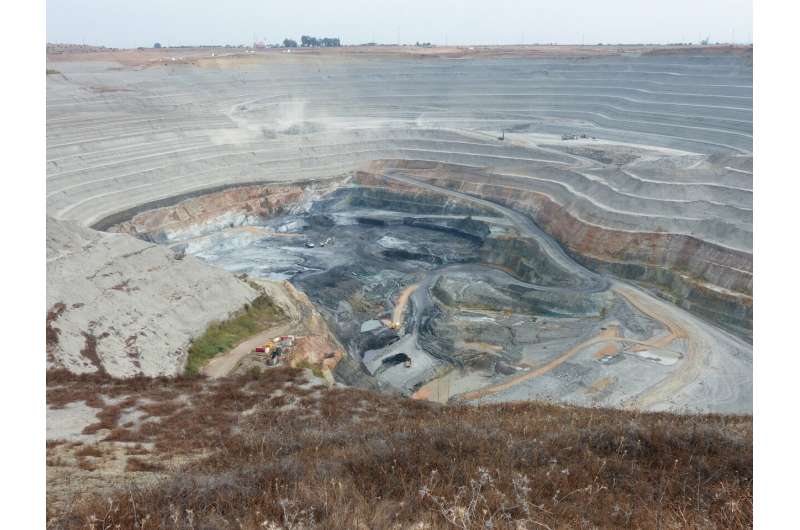Do microbes control the formation of giant copper deposits?

One of the major issues when studying ore deposits formed in surficial or near-surface environments is the relationship between ore-forming processes and bacteria. At a first glance, these environments appear to be a preferred place for the growth of microbial ecosystems because they potentially have large amounts of nutrients. However, studies have been restricted because of the low likelihood of microbe fossilization and because biomarkers are not always definitive.
This contribution to Geology by Fernando Tornos and colleagues tries to solve the long-standing debate on the control of microbes on secondary sulfide formation. They predict that future multidisciplinary studies will prove that microbes have a key control on the precipitation of metals in these shallow environments.
Their case study is based on the unusual Las Cruces deposit in southwest Iberia, where a significant part of the high-grade copper ore occurs as thick, massive veins of copper sulfides. Tornos and colleagues have direct evidence that the mineralization is currently being formed there in relationship with active aquifers and in an area isolated from the surface by a thick layer of marl. Thus, the place is ideal for tracking for anaerobic microbes.
With the help of the mining company, First Quantum, the team was able to extract pristine samples that had never been in contact with the atmosphere.
Different microbiological techniques and detailed electron microscope studies have shown that copper sulfides are precipitating today in relationship with colonies of sulfate-reducing microbes. The nanometer-sized crystals of covellite are embedded in the polymeric compounds that encapsulate bacteria. These crystals coalesce, later forming the big veins. However, much more work is needed in order to know to which extent these processes are global and if microbes control most of the formation of the secondary copper deposits.
More information: Fernando Tornos et al. Do microbes control the formation of giant copper deposits?, Geology (2018). DOI: 10.1130/G45573.1
Journal information: Geology
Provided by Geological Society of America




















